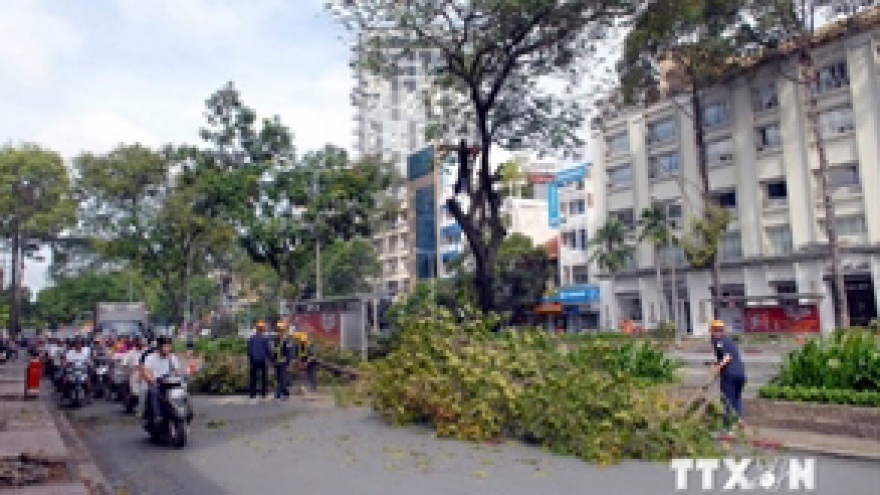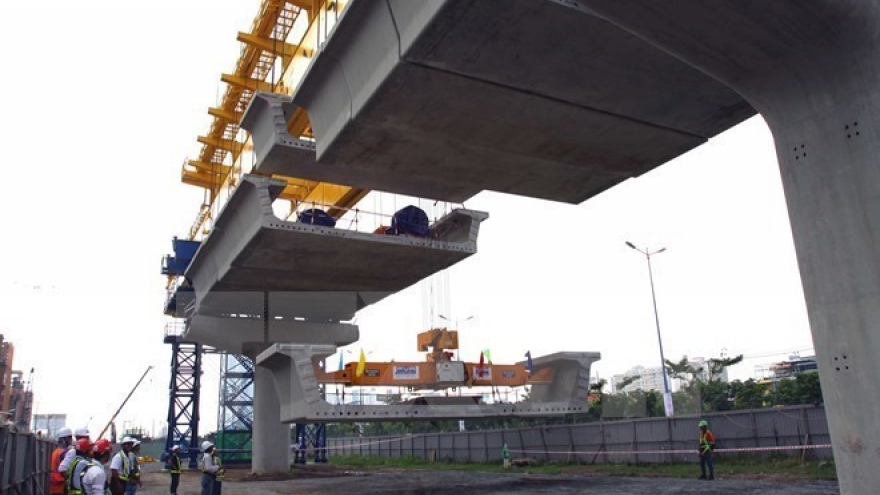Investment policy pushed for HCM City's Metro Line 5
Ho Chi Minh City’s Management Board of Urban Railways (MBUR) has submitted a proposal to the city’s People’s Committee on the construction and investment policy for the first stage of the Urban Metro Line No. 5 project, from Bay Hien intersection in Tan Binh district to Saigon Bridge.
“The project has received capital commitments from a number of investors for its construction, of around US$1.87 billion,” a representative from the MBUR told VET.
Capital is coming from the Spanish Government, with US$328 million, the Asian Development Bank (ADB) US$567 million, the European Investment Bank (EIB) US$179 million and the German Development Bank (KfW) US$239 million. The remainder will be in reciprocal capital from the government.
 |
The first phase of Metro Line No. 5 will have a total length of 8.9 km, including 7.46 km underground and 1.43 km aboveground, with nine stations.
In the first stage the line will connect with Metro Line No. 1 at Saigon Bridge and Metro Line No. 2 at the Bay Hien intersection. The following stage will connect with Metro Line No. 3b at the Hang Xanh intersection and Metro Line No. 4 at the Phu Nhuan crossroads.
Metro Line No. 5 will transport passengers from suburban areas to the city center and bring significant economic, financial, social and urban benefits.
The line is expected to be put into operation by 2025. Average speeds on the line will be 36.7 km/m with a maximum of 90 km/h. It will be driverless, with automated ticketing systems and smart cards.
In the document sent to the People’s Committee, MBUR said that changes in Vietnam’s administrative regulations have led to approval of the investment policy and the project itself being delayed. Implementation was slow this year and last year while those involved waited for guidance on the Law on Public Investment.
Investors have therefore expressed concern about the approval process for the project and the disbursement of their financial resources.
In order to ensure that project progress satisfies investors, MBUR has proposed that the People’s Committee consider submitting the investment policy for Metro Line No. 5 to the Prime Minister then the National Assembly for ratification.
In related news, two months ago local authorities proposed the Ministry of Planning and Investment (MPI) consider the use of Japanese ODA loans for the funding of two stages of Metro Line No. 3a, from Ben Thanh to Tan Kien. The city submitted an option of adding the two phases to the list of projects using Japanese ODA loans in the 2016-2018 period.
The Republic of Korea’s GS Engineering & Construction Corporation (GS E&C), meanwhile, has proposed it expand its investment in the city’s infrastructure development, especially in transport. The company has been conducting research so it can participate in projects within the Ben Thanh - Tham Luong Metro Line No. 2 and Metro Line No. 5 from the Can Giuoc Bus Terminal to Saigon Bridge.



